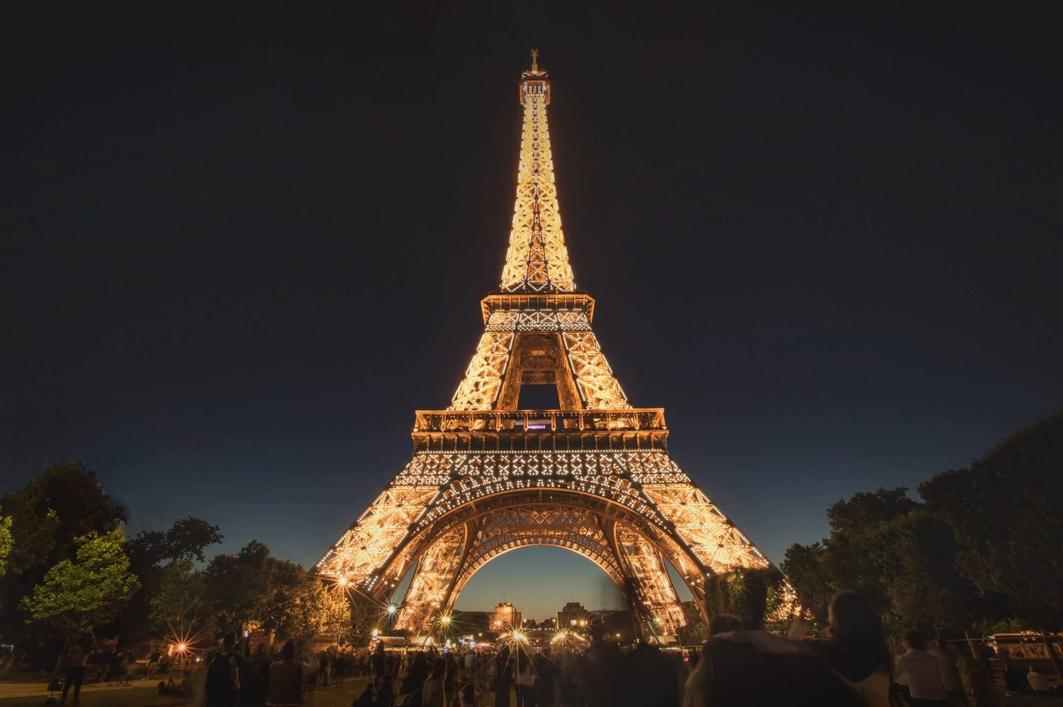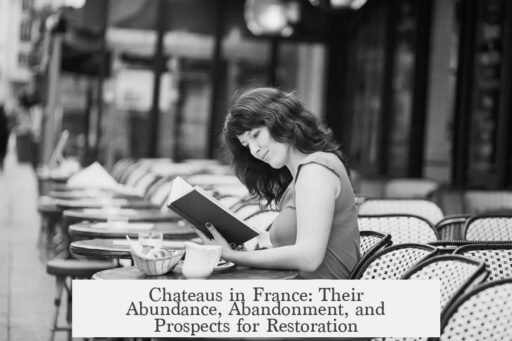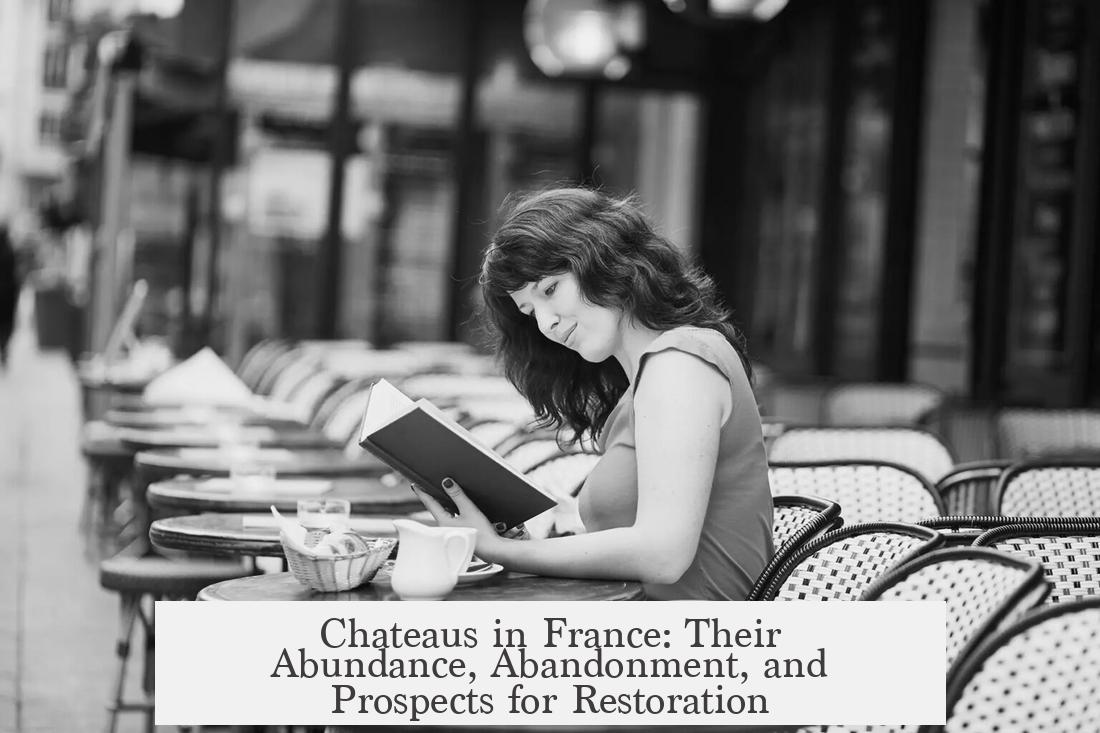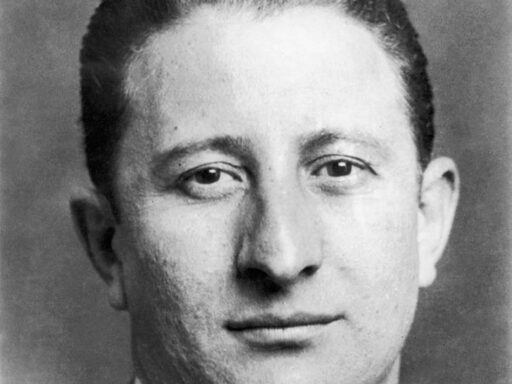France has many chateaus because historically they served as homes and strongholds for the nobility who owned large estates across extensive farmland.

Originally, chateaus functioned as fortified residences where noblemen controlled and protected their lands. This defensive role declined as banditry threats lessened, transforming chateaus into country homes reflecting wealth and status. The abundant farmland and the large number of noble families in France explain why so many chateaus arose.
However, many of these chateaus became abandoned over time. The French Revolution played a major role by dissolving the nobility and revoking their special rights. Although land was not forcibly redistributed like in some other countries, estates were frequently broken up and sold. This fragmentation made it difficult to generate enough income to maintain the large and costly chateaus.

Furthermore, economic and social changes contributed to abandonment. The concentration of wealth shifted from rural agriculture to industrial cities as France industrialized. Without wealthy landowners living on or near these properties, upkeep of chateaus in the countryside became unsustainable.
- Chateaus started as noble strongholds, then became country homes.
- Many built due to France’s large nobility and farmland.
- The French Revolution ended noble privileges impacting estate income.
- Estates fragmented and sold, limiting maintenance funds.
- Industrialization shifted wealth to cities, reducing rural upkeep.
This combination of historical, political, and economic factors results in the large number of chateaus in France alongside many that are abandoned or in disrepair.

Why Are So Many Chateaus in France and Why Are So Many of Them Abandoned?
France boasts an extraordinary number of chateaus because historically, these grand estates served as homes and strongholds for the nobility, who controlled vast swaths of farmland across the country. However, many of these castles now stand abandoned due to a mix of social upheaval, economic shifts, and changes in the value and ownership of land. Let’s dive in to explore why France ended up with so many chateaus, and the fascinating reasons behind their current state of neglect.

Imagine France centuries ago, teeming with noble families. Each sizeable estate demanded its own centerpiece, a château—a majestic home that was more than just lavish living quarters. These residences functioned as bastions of power, symbols of status, and practical fortresses in nearly every rural patch.
Initially, chateaus were fortresses designed for defense. Noblemen needed strongholds to protect their realms and assert control over surrounding lands. This was no mere vanity project—it was a necessity in eras rife with banditry and warfare. Over time, as safety improved and banditry waned, these strongholds transitioned into elegant country homes. They remained centers of aristocratic life, hubs for managing farmlands and showcasing wealth. Given that France historically had both a large noble class and extensive farmland—the perfect recipe for chateaus to flourish—their numbers naturally soared.
The Nobility’s Role: Why So Many Chateaus?
Every lord or noble family with a substantial estate demanded their own château. The prevalence of these estates in France wasn’t just about wealth but about control and tradition. The chateaus were symbols of centuries-old authority, often passed down through generations.
The sheer volume of rural noble estates meant countless chateaus peppered across the French landscape. From the Loire Valley’s fairy-tale castles to the grand homes nestled in Burgundy or Normandy, this legacy defines much of France’s architectural and cultural heritage.
So Why Are So Many of These Chateaus Abandoned?
The story changes dramatically with the French Revolution of 1789. The Revolution didn’t just rip the crown from the king’s head—it dismantled the entire noble class’s privileges. Nobility lost its rights; estates were broken apart. This upheaval marked the beginning of the end for many chateaus.
Unlike the brutal liquidation of estates seen in later communist regimes, France’s redistribution wasn’t a wholesale seizure. But special noble rights that once ensured large estates’ profitability vanished. Large properties were split, sold, or divided. Maintenance costs for these oversized country homes skyrocketed, creating burdens that new owners or absent heirs couldn’t or wouldn’t bear.
And consider this: without the noble class’ concentrated wealth in the countryside, who would maintain these grand but costly buildings? The countryside’s economic power diluted following land redistribution and social reforms.
Meanwhile, France’s story continued to shift as industrialization took hold during the 19th and 20th centuries. Wealth migrated from the lush fields and vineyards to burgeoning cities: Paris, Lyon, Marseille, places buzzing with factories, commerce, and new money. Once the heartbeat of noble power, rural lands lost their strategic and economic value.
Wealth turned urban, the function of large fortified homes faded, and many chateaus fell into disuse. Without heirs willing or able to maintain them, chateaus faced neglect. Restoration is costly. Heating, repairs, and staff wages add up. Many estates became financial millstones. Some owners sold or abandoned their properties, leaving behind hauntingly beautiful ruins.
Is There a Silver Lining? Can Chateaus Be Saved?
While many chateaus are abandoned today, efforts to rescue these treasures exist. Some have been restored as museums, hotels, or event spaces. Their history is too rich, their architecture too stunning to let fade silently.
For travelers and history buffs, visiting chateaus offers a glimpse into France’s layered past. Each stone wall and turrets whispers stories of nobility, revolution, and resilience. Could the revival of these estates also spark rural renewal? Some communities think so.
What lessons do these chateaus teach us? Perhaps that power, wealth, and social structures shift. But culture and heritage can endure—and even flourish if cared for. The challenge is substantial but worth the effort.
Conclusion: The Tale of Chateaus Is a Tale of France
France’s landscape is dotted with chateaus because history demanded and rewarded noble estates across its lands. Their abandonment stems from vital historical changes: the Revolution’s upheaval, the loss of aristocratic privileges, the breakup of estates, and the rise of industrial cities.
These chateaus capture the imagination and tell us much about France’s social fabric, economy, and identity over the centuries. Their decaying walls are reminders of a vanished way of life—and beckon us to preserve what remains.
Next time you see a chateau—whether in a travel brochure or a Netflix series—remember they aren’t just pretty buildings. They are snapshots of history, shaped by nobility, revolution, and the tides of wealth. Might some abandoned chateaus inspire you to dream about history’s rise and fall? Or perhaps spur you to explore France’s countryside in search of stories etched in stone.




